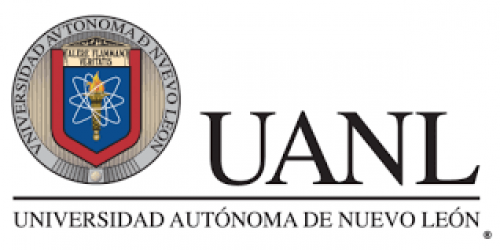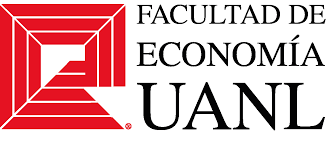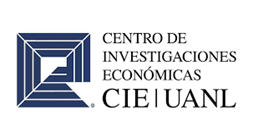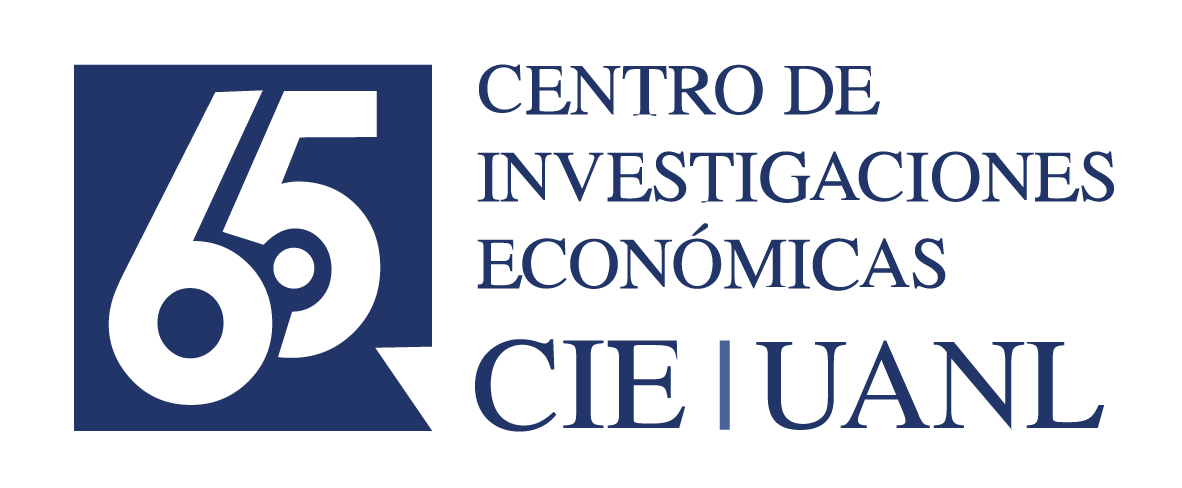Author´s Guidelines
Author Guidelines
- Desired profile of researchers
TRENDINOMICS does not restrict the publication of articles to any specific type of researchers, as long as the research has the scientific rigor required by the journal and is submitted according to the guidelines detailed here.
- Exclusivity and originality
The research contribution must be original and unpublished and not have been previously published or distributed in other electronic or printed media. Nor must it be submitted to other journals. The letter of exclusivity and originality must be attached as an additional document.
- Publication requirements
Articles in Spanish and English are accepted.
The submission format must consider Times New Roman 11 point font, 1.5 line spacing and the 4 margins of each page of 2.5 cm.
The content of the article must have the following structure: Home page in Spanish and English (Title, Abstract, Keywords, JEL Codes), Introduction, Literature Review, Data and Methodology, Results and Discussion, and Conclusions and Recommendations, Acknowledgements, Declaration of interests, References, Appendices (if necessary).
Abstract: Must consist of 150 words maximum and be structured as follows:
- Objective
- Methodology
- Main result(s)
- Main contribution
Keywords: Consider a maximum of 5 words. They must be concise and phrases should be avoided.
JEL Codes: Must represent the standards associated with keywords, according to the JEL code guide of the American Economic Association.
Length: Document limited to 3,000 words not including the home page.
Sections: These should be clearly identified up to a level 3 of subdivision, as shown below:
2 Data and Methodology
2.1 Data and variables
2.1.1 Econometric Model
Introduction: This should present the problem addressed, the background and the context of the topic being analyzed. It is recommended to state the originality and/or motivation of the research, the objective and/or hypothesis, the main contribution, as well as the most relevant result.
Literature Review: The theoretical and/or empirical support of the topic at the frontier of knowledge should be included. It is recommended that this section not exceed 500 words.
Data and Methodology: In this section you should declare the data, describe the variables to be used, present the mathematical formulation of the main model, but not derive it in all its versions.
Results and Discussion: This section presents the findings in coherence with the methodology section, as well as the interpretation of the same in intuitive terms. Additionally, the results can be compared with similar national and international research.
Conclusions and Recommendations: This section should represent the fulfillment of the objectives set out in the introduction and their relevance to the frontier of knowledge. Additionally, the practical implications (such as in terms of public policy) of the results should be briefly discussed. It is recommended not to exceed the 250 words in this section.
Acknowledgements: This is not mandatory. If included, it acknowledges those who indirectly contributed to the completion of the study (people and institutions) and if funding was received for the development of the research, it should be stated in this section.
Appendix: This is not mandatory. It is used if you want to present complementary material that contributes to a better understanding of the research. They should be numbered.
- About citations and references
This guide provides detailed information about in-text citations and the format to be followed in the reference section for TRENDINOMICS. Authors are advised to take this document into account before submitting an article for possible publication.
In-text citations
If the statement in the text includes the author's last name, only the date is written in parentheses.
There is a study by Manrique (2003) that estimates…
If the work has more than two authors, only the surname of the first author is written, followed by the phrase et al..
Preto et al. (2009)…
If the author has more than two works, the author's surname and the years of the works are cited, separated by a comma.
The concept of informal work was introduced by Wart (1971, 1973)…
If the author or authors are not included in the sentence, the surname or surnames and the date are written at the end of it in parentheses.
(…) and that in most cases he manages to perform as an entrepreneur in family businesses of reduced productive scale (Porto, Fernández & Martínez, 2008).
For more than two works, when the author is not included in the sentence or statement, they are separated by a semicolon.
(…) which have not managed to insert themselves into the legal and structured economic dynamics (Salas, 2000; Shasa, 2004; Porto et al., 2008).
If the work is from an institution, the initials of the institution are cited, followed by the year.
(…) as well as by the International Labour Organization (ILO, 1972).
If the work of AUTHOR A is cited by AUTHOR B and you have not read the original work, list the reference of AUTHOR B in the corresponding section (References).
In the sense of AUTHOR A (cited in AUTHOR B, 2012)…
List of references
A list of references includes only the sources that support the research and that were used for the preparation of the work. It should be presented using French indentation.
General considerations
The alphabetical order is followed from the first letter of the reference.
The works of the same author are ordered chronologically.
Electronic documents
The name of the database where the article was found is not included, but it is in the case of theses and electronic books.
The date on which the article was retrieved is not included.
A period (.) is not written after the Web address (URL).
Digital Object Identifier (DOI)
A unique alphanumeric series that was assigned by the publisher to a document in electronic format.
Identifies content.
Provides a consistent link for its location on the Internet.
Currently, not all documents have a DOI; but if they do, you must include it as part of the reference.
Articles
References must be submitted using the APA 7th edition format. Below is a guide to help you prepare the References section.
- One author
Todaro, M. P. (1976). Urban job expansion, induced migration and rising unemployment: A formulation and simplified empirical test for LDCs. Journal of Development Economics, 3(3), 211-225. https://doi.org/10.1016/0304-3878(76)90049-3
- Two authors
Corden, W. & Findlay, R. (1975). Urban unemployment, intersectoral capital mobility and development policy. Economica, 42(165), 59-78. https://doi.org/10.2307/2552986
- In the absence of the volume or journal number, please identify the article by the period covered by the publication:
Fernández, I. (2015). Competition in the air and airport sector. Revista de Administración Pública, May-August (197), 91-132. http://dx.doi.org/10.18042/cepc/rap.197.03
Books
Brown, S., Bessant, J. R., & Lamming, R. (2013). Strategic operations management. (3rd Ed.). New York: Routledge. http://dx.doi.org/10.4324/9780203079355
Electronic versions
Gonzalez-Mena, J. (2007). Diversity in early care and education: Honoring differences. http://mhprofessional.com/product.php?isbn=007722289X
Chapters/articles in books
García-Vegas, R. (2011). Trends and good practices in e-Administration; Quality and citizen care; Energy efficiency in Public Administration. In M. Arenilla Sáez (Coord.), Crisis and Reform of Public Administration. (pp. 201–346). Spain: Netbiblio. http://dx.doi.org/10.4272/978-84-9745-516-9.ch2
Barrera, E. (1996). The U.S. – Mexico border and post NAFTA Mexico, Mass Media and Free Trade. NAFTA and the cultural industries. E.G. Mc Anany, K.T. Wilkinson, eds. Texas: The University of Texas Press: 187-221.
Theses/dissertations
Miahra, A. (2009) Essays on Global Sourcing of Technology Projects, Doctoral Dissertation, Carlson School of Management, University of Minnesota.
Memoir articles, conferences, research papers, discussion papers
Bu, R. (2015). Study on International Trade Tax Competition Problems under Regional Economy.2015 International Conference on Education Technology, Management and Humanities Science China (ETMHS 2015). Atlantis Press. http://dx.doi.org/10.2991/etmhs-15.2015.174
Thorleuchter, D., Van, D. & Prinzie, A. (2010). Extracting Consumers Needs for New Products A Web Mining Approach, Proceedings of the 3rd International Conference on Knowledge Discovery and Data Mining, Gong, M., ed.: 440-443.
Díaz-Fuentes, D. & Revuelta, J. (2009). Public spending and growth in Latin America and Spain: 1960-2000, Paper, XVI Meeting on Public Economics, University of Granada.
Lamartina, S. & Zaghini, A. (2008). Increasing Public Expenditures: Wagner’s Law in OECD Countries, CFS Working Paper No. 2008/13, Center for Financial Studies, University of Frankfurt.
Narayan, P., Nielsen, I. & Smyth, R. (2006). Panel data, cointegration, causality and Wagner’s Law: empirical evidence from Chinese provinces, Discussion Paper 01-06, Department of Economics, Monash University.
Tables
Tables must have their title located in the header, they will be numbered in consecutive order with Arabic numerals and they will be written in Times New Roman font at 10 points, aligned to the left and without spaces. At the bottom of the table, the source of the table must be indicated, according to the citation style declared in the bibliographic citation section of the guidelines for authors.
Tables must be created with the Word or Excel table editor, so that they can be edited by the journal.
If a table is very complex, it can be presented as an image, complying with the corresponding specifications.
Tables are considered to be: tables, catalogue, lists, etc.
Images
Their title will be indicated at the bottom of the image and they must be numbered in consecutive order with arabic numerals. At the bottom of the image, the source of the image must also be indicated, according to the citation style declared in the bibliographic citation section of the guidelines for authors. The graphs must include (as appropriate) scale and axis titles. The resolution for acceptance of these is 300 dpi in the .jpg; .png formats. They must be legible, they must not be displayed as “pixelated”.
Images are considered to be: graphs, maps, schemes, diagrams, vector representations, etc.
Formulas and/or equations
The formulas must meet the following characteristics:
- They must be presented with the Word formula editor.
- They will not be accepted as images or with errors in the supra or subscript.
- The variables will be written in italics.
- The format of the equation must allow for editing.
- The decimals are separated by a period; while the thousands are separated by commas.
Tables, graphs and equations must be included in the text, in the corresponding section. Those that do not comply with the requirements described above will be grounds for editorial rejection.
The files that must be sent to the journal are the following:
- Text in Word format (without the authors' names)
- Editable tables
- Author'(s) CV(s)
- Letter of rights (specifying that the article is unpublished, has not been published, and is not submitted to another journal)








